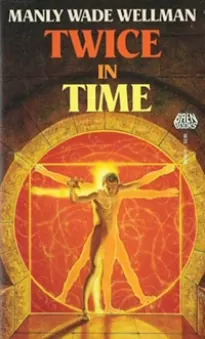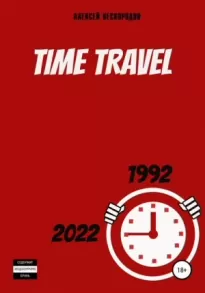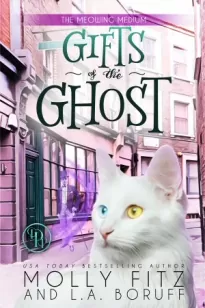TWICE IN TIME

- Автор: Мэнли Веллман
- Жанр: Фантастика
Читать книгу "TWICE IN TIME"
WHEN THE FUTURE MEETS THE PAST
During a writing career that spanned six decades, Manly Wade Wellman published over eighty books and more than three hundred short stories. He was an author as versatile as prolific, whose output included science fiction and Civil War biographies, fantasy and novels for young adults, mysteries and regional histories, mainstream novels and nonfiction studies. A Civil War history,
Most readers will best remember Wellman as a writer of haunting fantasies rich with Southern folklore—particularly those stories concerning John, a wandering minstrel whose guitar was strung with silver strings, and who battled strange evils in the mountains of North Carolina. These stories were collected in
Born May 21, 1903, in the village of Kamundongo in Portuguese West Africa, Manly Wade Wellman moved to the United States as a child and grew up in Kansas. Working in Wichita as a newspaper reporter, he quit his job just as the Depression was getting started. Struggling as a freelance writer, in 1934 Wellman moved to New York City in order to be closer to the pulp markets. By mutual good luck, top science fiction agent Julius Schwartz took Wellman on as a client, and from the late 1930s until the close of World War II Wellman was a star in this genre. Wellman's flair for headlong action and rousing melodrama was pure space opera and well suited to the pulp-formula science fiction of the day, whose readers were mostly adolescents whose understanding of science was frequently even less than that of those writing it. While most of Wellman's science fiction has aged not at all well, he did leave a certain core of superior work which can hold its own with the best science fiction of the pulp era.
Unquestionably Wellman's finest work of science fiction is
(Those of you who insist on surprise endings, please stop reading this introduction now and proceed directly to
Actually it isn't much of a surprise, and I'm reasonably certain most readers will have stumbled onto it after a chapter or two. Still: Fair warning.)
Picking up where I left off, then. As I said, Wellman was a keen history buff, and one of his special interests was the Renaissance. Once Wellman became interested in some particular fixation, he researched it tirelessly, ruminated upon it, and eventually would incorporate it into his writing. Leonardo da Vinci was one such obsession.
Among the many science fiction pulps for which Wellman wrote was
Fortunately the novel was snapped up by
Now, for the first time, the complete version of
Included in this edition is a previously unpublished poem by Leah Bodine Drake (whose volume of poetry, A
Also reprinted here for the first time is a companion Renaissance novelette, "The Timeless Tomorrow," originally published in the December 1947 issue of
Leonardo da Vinci (1452-1519) spent his last years in the French court of Francis I. Nostradamus (1503-1566) would have been about 16 years old when Leonardo died. One wonders whether they might ever have met and talked. Perhaps therein might lie the source of Nostradamus' prophecies? Only Manly Wade Wellman, who died at his home in Chapel Hill on April 5, 1986, could have told us the story.
—Karl Edward Wagner Chapel Hill, North Carolina
"When setting to work in paint, it
was as if he were mastered by fear…
he could finish nothing which he had begun."
Within my brain lies, pure and clear,
A land of unfabled rocks and screes,
Crags cut from jasper rising sheer
From the slow waves of sunken seas,
Mountainous isles like dragons' spines
Cloisoned on glacial waters, and deep
Grottoes of hollowed tourmalines
Where the unloving sirens sleep.
There cities domed, unpeopled, plunge
Down spiraling stairways to the shore.
There, like a kestral, thought can range;
And at that country's secret core.
Her feet upon shards of agate rent
By iris and brooding columbine,
Sits my Enigma, innocent
And, like her flowers, androgyne.
Closed in a cone of emerald light
Is Leda, Narcissus, Anne the Blest—
Saint, ephebus and water-sprite—
Synthesis of my soul's unrest!
The light, the perilous visions fade,
The emerald is unbroken still:
The god in me yet hands betrayed
By the old Judas of my will.





